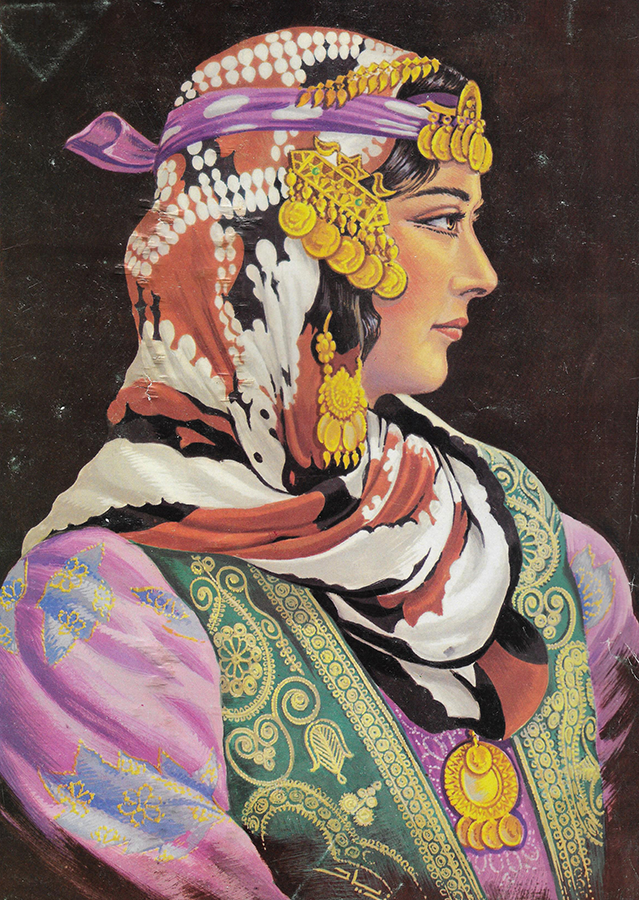Silk had been an important textile for merchants who plied the silk routes from China through Palmyra and on to Rome. First smuggled into Syria by two Byzantine priests around 553 who concealed the eggs of the silkworm moth concealed in their walking sticks, silk worms were soon cultivated in Syria in spring and autumn in west mountains, and along the sides of the Orontes River.
The leaves of the white mulberry tree, which grows in the Syrian and Lebanese mountains, are the staple food of the silkworms, and Allepo was Syria's center of textile production until the 1800s. In fact, the silk coronation robe worn by Queen Elizabeth 1 in 1559 was woven in Allepo.
Silk threads were laboriously collected and processed by hand using the traditional method by women in Beirut, Homs and Hama (see "Silk in Syria") During the winter months, the same families spun and wove the silken fabric. (See "Syrian Silk Industry Hanging by Thread.")
This type of silk scarf, popular in the north, was woven in individual homes in two sizes: 2 meters by 2 meters and a rectangle of 1 meter by 2 meters. In recent years other sizes designed for the European tourist market were added.
Each scarf was printed by hand using intricately hand-carved wooden blocks. For each scarf pattern, the master wood carvers created one to eight prints. Each scarf was stretched out on a table and the artisans applied the dye to the blocks and carefully pressed the blocks onto the scarves to make the designs.
Scarves printed in red and black were the most popular, most likely because they coordinated with the region's black dresses embroidered in red.
These scarves were available in the Allepo souk from more than a dozen shops that specialized in this type of merchandise.
The drawing was part of a series of folkloric cards produced in the 1950s by Syrian artist Ziad Zokar.
|

